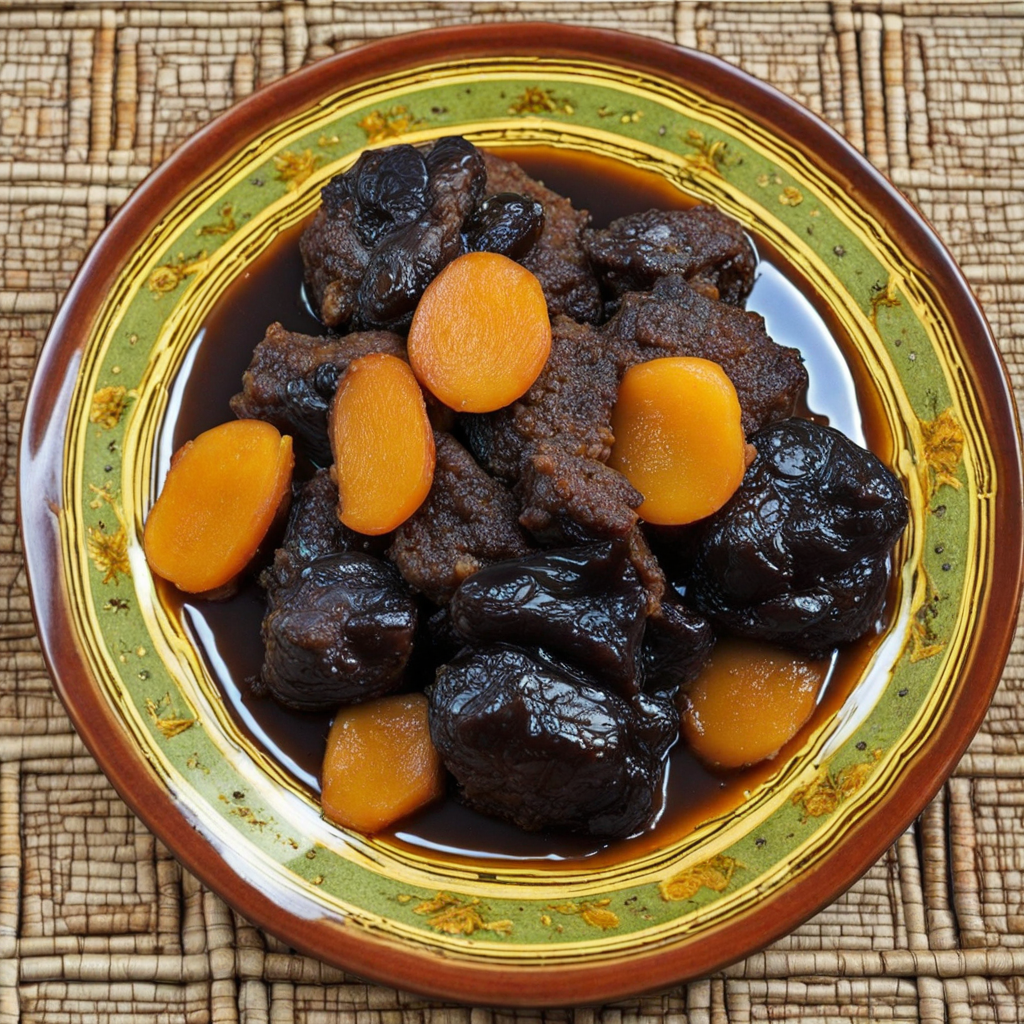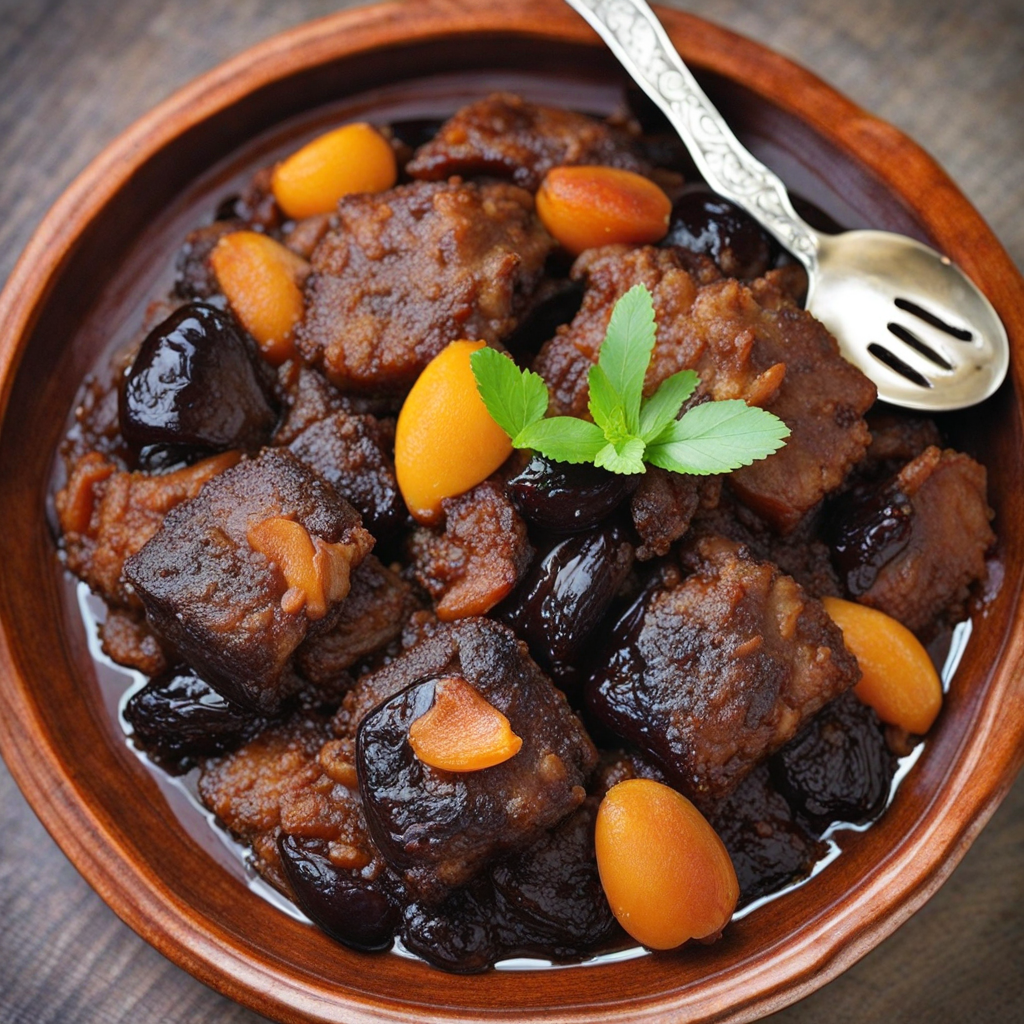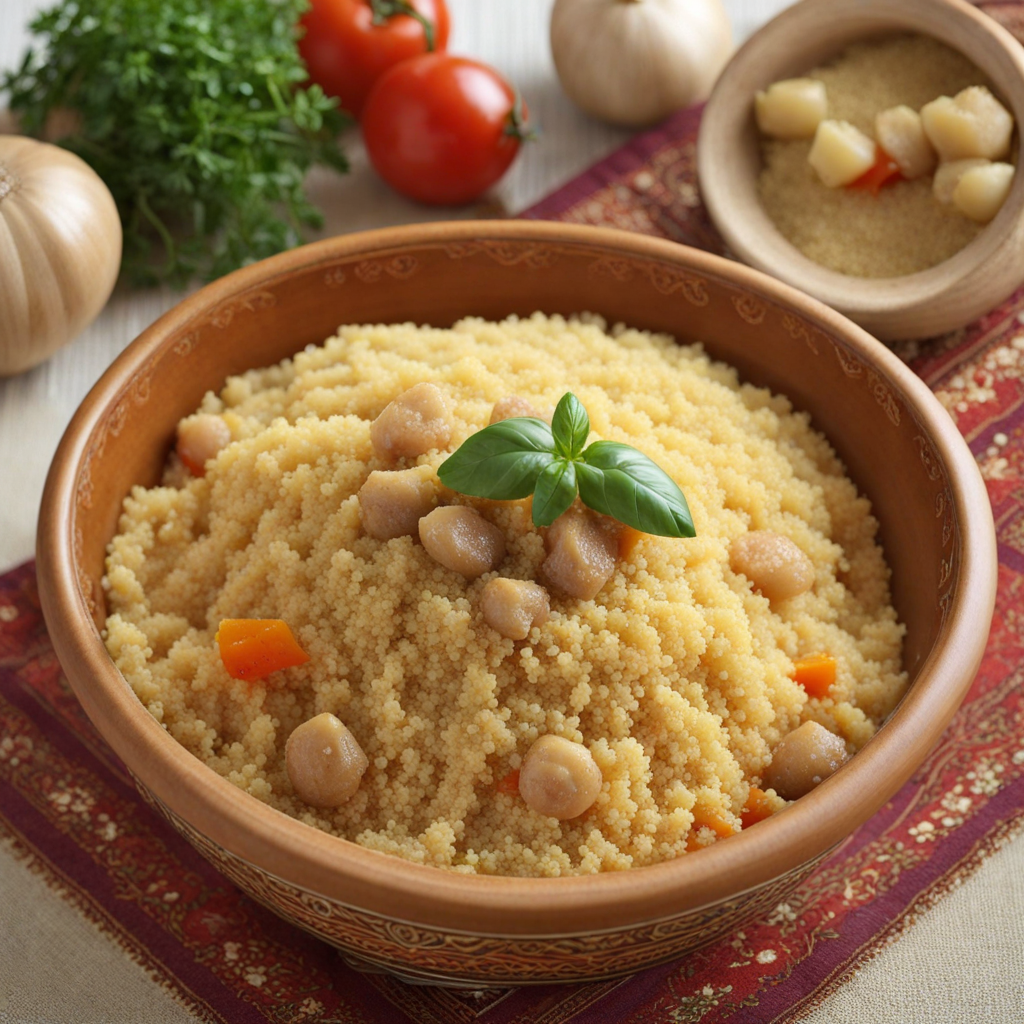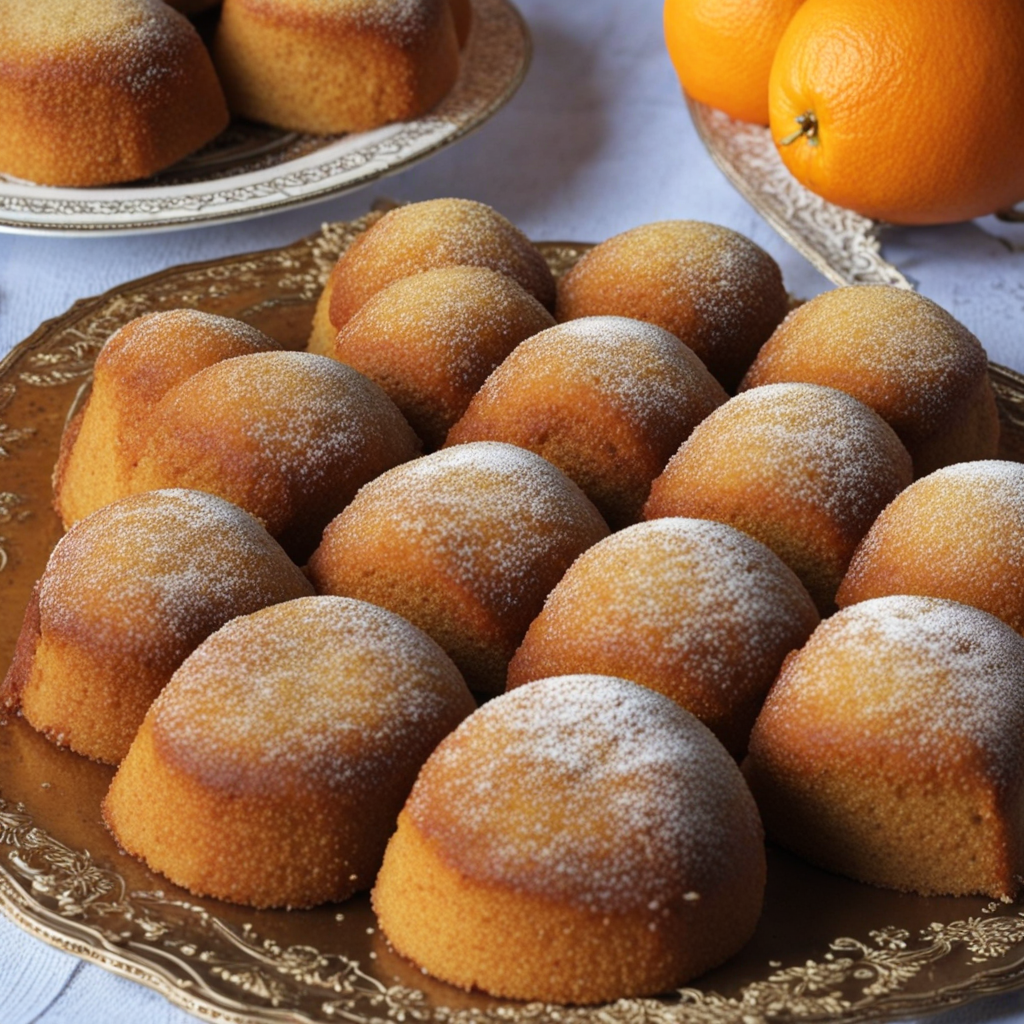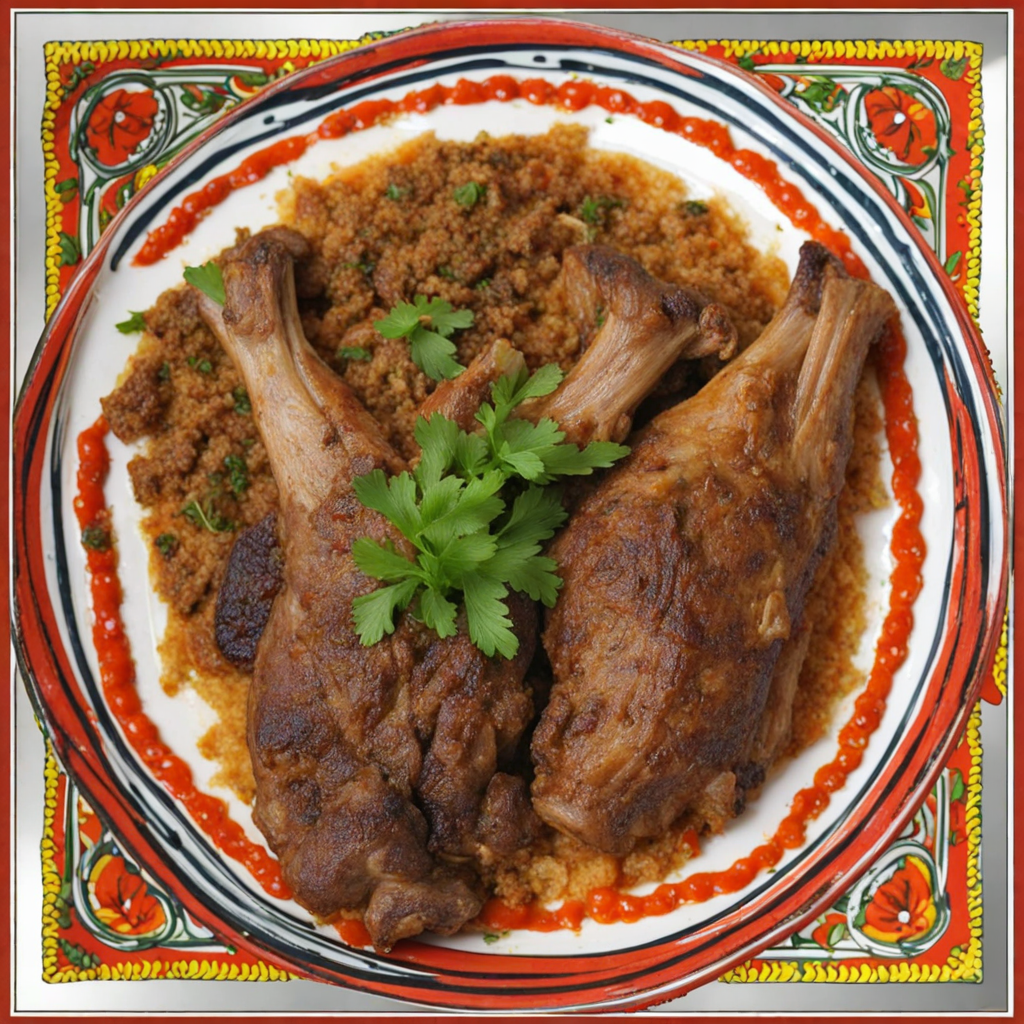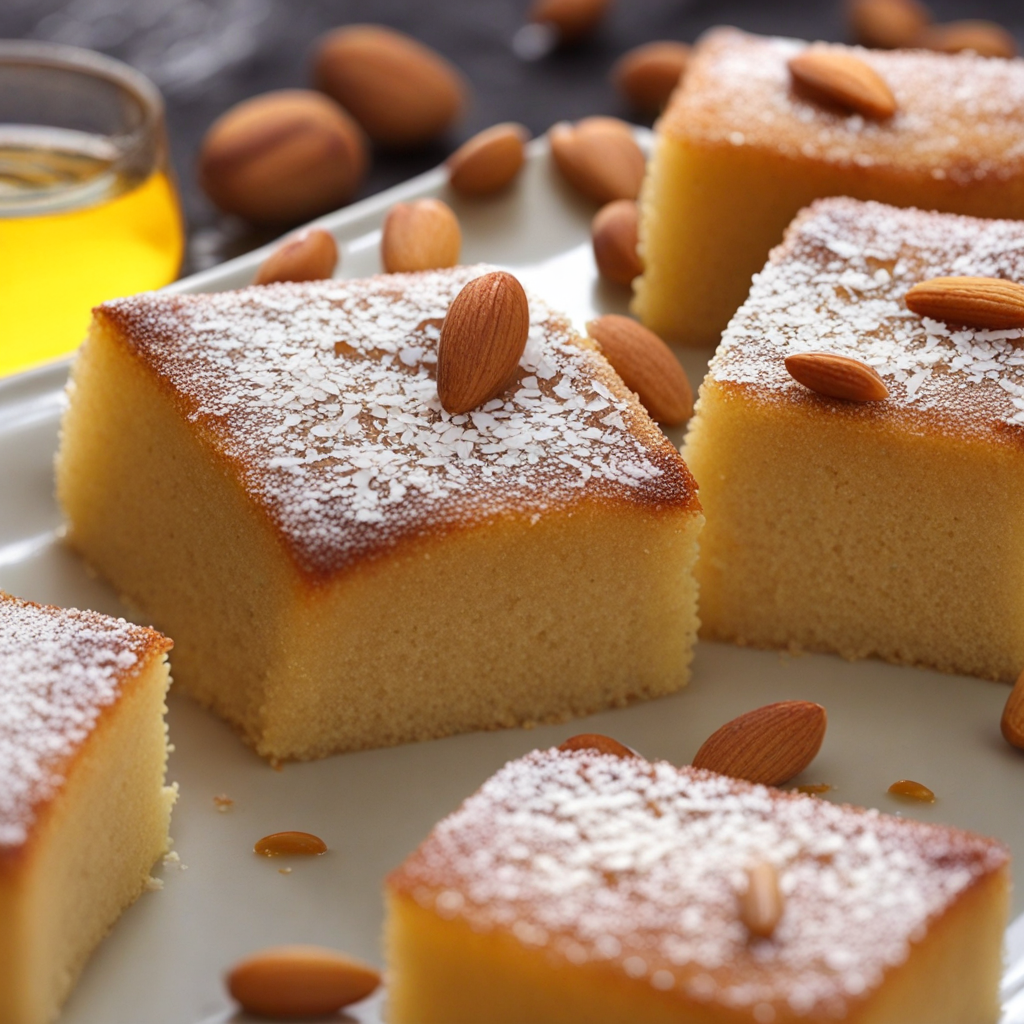Lham Lahlou
Lham Lahlou is a traditional Algerian dish that beautifully encapsulates the rich culinary heritage of the region. At its core, this dish features tender pieces of lamb that are slow-cooked to perfection, allowing the meat to absorb a medley of fragrant spices and sweet flavors. The addition of dried fruits such as apricots, prunes, and raisins adds a delightful sweetness, creating a harmonious balance between savory and sweet that is hallmark to North African cuisine. The dish is often enhanced with aromatic spices like cinnamon, nutmeg, and saffron, which lend a warm and inviting fragrance that wafts through the kitchen as it cooks. What sets Lham Lahlou apart is its unique combination of textures and flavors. The lamb is typically braised until tender, while the dried fruits become plump and juicy, providing bursts of sweetness with each bite. It is often served over a bed of fluffy couscous or with crusty bread, allowing diners to soak up the rich sauce that develops during cooking. This dish is a celebration of contrasts, where the savory meat is perfectly complemented by the natural sweetness of the fruits, making every mouthful a delightful experience. Traditionally prepared for special occasions and family gatherings, Lham Lahlou is more than just a meal; it’s a dish that brings people together. The vibrant colors and enticing aromas create an inviting atmosphere, making it a centerpiece for festive celebrations. When you explore Lham Lahlou, you are not just tasting food; you are partaking in a cultural experience that reflects the warmth and hospitality of Algerian traditions. Whether enjoyed at a family gathering or a festive occasion, this dish promises to leave a lasting impression on your palate and heart.
How It Became This Dish
The Sweet Meat of Algeria: An Engaging History of لحم الحلو (Laḥm al-Ḥalū) #### Origins and Etymology Laḥm al-Ḥalū, translating literally to "sweet meat," is a traditional dish from Algeria that embodies the rich tapestry of North African culinary heritage. Its origins can be traced back to the influences of various civilizations that have inhabited the region, including the Berbers, Arabs, Ottomans, and the French. Each culture contributed distinct flavors and techniques that shaped what we now recognize as this unique dish. The term "laḥm" refers to meat, while "ḥalū" means sweet. This juxtaposition of savory and sweet has deep roots in Middle Eastern gastronomy, where the combination of these flavors is celebrated. The dish typically features lamb or beef, slow-cooked with a medley of spices and sweet ingredients, including dried fruits like apricots, prunes, or raisins, and sweeteners such as honey or sugar. Its preparation often invokes the techniques of tagine cooking, a hallmark of North African cuisine. #### Cultural Significance Laḥm al-Ḥalū holds a special place in Algerian culture, often served during festive occasions and communal gatherings. It is a dish that transcends mere nourishment, acting as a symbol of hospitality and tradition. In Algeria, sharing food is an integral aspect of social life, and laḥm al-ḥalū is frequently prepared for weddings, religious celebrations like Eid, and family reunions. The dish reflects the values of generosity and community that are deeply embedded in Algerian society. Preparing laḥm al-ḥalū often involves entire families coming together, emphasizing the communal aspect of cooking and eating. The preparation of the dish is often accompanied by stories and laughter, reinforcing familial bonds and cultural narratives. #### The Recipe: An Evolving Tradition While the core ingredients of laḥm al-ḥalū remain relatively consistent, variations exist that reflect local tastes and available resources. Traditionally, the dish is made with lamb or beef, which is marinated in spices such as cinnamon, cumin, and coriander. The meat is then slow-cooked with onions, garlic, and a variety of dried fruits, creating a rich, aromatic concoction that balances savory and sweet flavors. In some regions, nuts like almonds or walnuts are added for texture and richness. The choice of spices and fruits can vary significantly, influenced by local agriculture and the historical trade routes that brought different ingredients to Algeria. For instance, the use of saffron, once a luxury ingredient, highlights the trade connections with the Mediterranean and beyond. The cooking method, often utilizing a traditional clay pot or tagine, plays a crucial role in developing the dish's flavors. The slow cooking process allows the meat to tenderize, while the sweet ingredients meld with the spices, creating a harmonious blend. Over time, as culinary techniques evolved, so too did the methods of preparation, with modern chefs experimenting with new ingredients and presentation styles. #### Historical Context and Evolution The history of laḥm al-ḥalū is intertwined with the broader culinary evolution of Algeria. The region's location along historical trade routes facilitated the exchange of spices, ingredients, and cooking techniques. The Berbers, who are indigenous to North Africa, were among the first to cultivate local ingredients and develop early cooking methods. With the arrival of Arab settlers in the 7th century, the flavors and cooking practices of the Middle East were introduced, further enriching the culinary landscape. The incorporation of spices like cumin, coriander, and cinnamon into Algerian cuisine can be traced back to this period. The Ottomans, who ruled parts of North Africa from the 16th century, also left a lasting impact, introducing new cooking styles and sweetening agents. The French colonization of Algeria from the 19th to the mid-20th century brought about significant changes in food culture. While French cuisine influenced many aspects of Algerian cooking, traditional dishes like laḥm al-ḥalū remained resilient, adapting rather than disappearing. The continued popularity of this dish serves as a testament to the endurance of Algerian culinary traditions. #### Modern Interpretations and Global Influence In contemporary times, laḥm al-ḥalū has seen a resurgence in interest, both within Algeria and among the global culinary community. Chefs are experimenting with traditional recipes, incorporating modern techniques and plating styles while respecting the dish's cultural roots. This evolution reflects a broader trend in gastronomy, where chefs aim to honor traditional flavors while innovating to create new dining experiences. The global interest in Middle Eastern and North African cuisines has also led to the spread of laḥm al-ḥalū beyond Algeria’s borders. Food festivals, cooking classes, and online platforms have facilitated the sharing of recipes and cooking techniques, allowing people from diverse backgrounds to explore and appreciate this dish. #### Conclusion: A Taste of Tradition Laḥm al-ḥalū is more than just a dish; it is a representation of Algeria’s rich cultural heritage, embodying centuries of history, tradition, and resilience. Its evolution reflects the interconnectedness of peoples and flavors across time and geography. As it continues to adapt and inspire, laḥm al-ḥalū remains a cherished symbol of hospitality, community, and the enduring love for good food in Algerian culture. In every bite of laḥm al-ḥalū, one can taste the stories of generations, the warmth of shared meals, and the rich history that has shaped this beloved dish. Whether enjoyed in a bustling family gathering or at a fine dining restaurant, it serves as a delicious reminder of the beauty of culinary traditions and the importance of food in bringing people together.
You may like
Discover local flavors from Algeria


